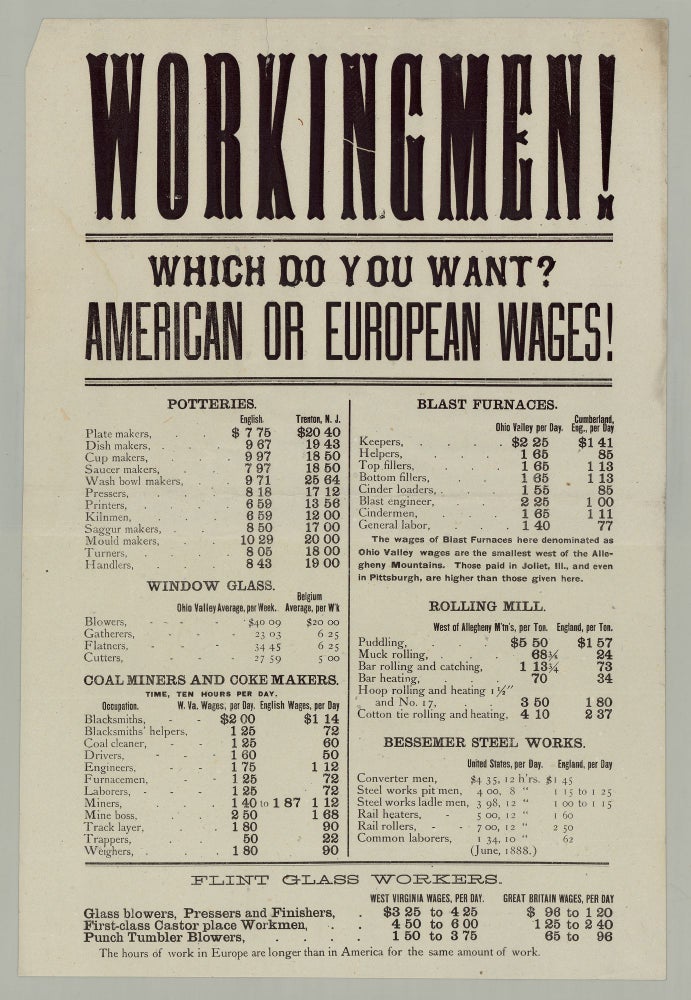Workingmen! Which Do You Want? American or European Wages!
[U.S.,] June 1888? Broadside, 19” x 12.5”. A scarce statistical broadside touting ‘higher’ U.S. wages for skilled and unskilled labor in seven major industries, comparing these wages to those received in Europe for the same occupations, apparently published to placate organized labor. Presented here are the comparative wages for those working in potteries (saucer makers, wash bowl makers, kilnmen, saggur makers, turners); window glass manufacturing (blowers, gatherers, flatners); coal mining and coke making, working “ten hours per day” (coal cleaners, mine boss, engineers); blast furnaces (bottom fillers, cindermen, keepers, helpers); rolling mills (cotton tie rolling and heating, muck rolling, puddling); steel works (converter men, steel works ladle men, rail rollers); and flint glass workers (punch tumbler blowers, first-class castor place workmen, glass blowers, pressers, and finishers). Wages per day, week, or ton are listed, and in many cases the U.S. wages are nearly double those of Europe’s. U.S. wages were sourced from factories in West Virginia, Ohio Valley, “West of Allegheny Mountains,” and Trenton, New Jersey. European wages are drawn from Belgium and England. A note at the bottom reads: “the hours of work in Europe are longer than in America for the same amount of work.” In the case of Blast Furnaces, it is noted that “The wages…here denominated as Ohio Valley wages are the smallest west of the Allengheny Mountains. Those paid in Joliet, Ill., and even in Pittsburgh, are higher than those given here.” 1888 saw the Burlington Railroad Strike and the passage of the first federal labor relations law. This broadside appears to have been published in order to mute broader labor unrest. OCLC records two copies, at the Virginia Historical Society Library and the Hagley Museum and Library. A google search locates another copy at the National Museum of American History. CONDITION: Good, one-inch tear in top margin.
Item #7190
Sold


